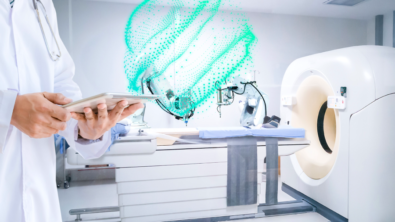The Complexity of MDR Expectations

The history of medical device regulations around the globe is full of examples of the need to balance and control risks to patients and caregivers with the benefits medical devices can bring. Oftentimes new regulations are brought into force when there is a failure in this balance. The European Medical Device Regulation (MDR) is no exception, with one of the factors contributing to the MDR creation spurred by the highly publicized Poly Implant Prothese (PIP) Breast Implant Scandal of the early 2010’s in France. In this case ruptured, industrial grade silicone implants caused significant health issues for many women in Europe and beyond. These women trusted that the medical systems, companies, and government regulations would work together to provide them a safe and effective product. Unfortunately, this system failed.
The MDR is a full regulatory overhaul of the European framework for medical devices. It includes changes affecting many economic operators such as manufactures, importers, distributors, Authorized Representatives, etc as well as significant changes for Notified Bodies – who will need to apply for a new designation. The major theme running through all these changes is a focused view of the entire device life cycle, with an emphasis on traceability and transparency. For medical device manufacturers, not only is more rigor required during development, expectations are increased in terms of clinical outcomes and safety with improved regulatory and public visibility throughout the life of the product and distribution. Let’s briefly look at a few of these areas:
Safety and Performance Requirements
New Safety and Performance Requirements replace the Essential Requirements from the outgoing Medical Device Directive (MDD). Manufacturers must document which requirements are applicable and develop rationales for those that are not. These requirements expand from the Essential Requirements and have wide ranging scope – examples range from particulate matter, to mobile computing platforms, cybersecurity, labelling, and design for compatibility.
Vigilance and Post Market Surveillance
Post market surveillance is not only complaint management and adverse event management – it requires true vigilance across all issue reporting, including those deemed not serious. Reporting is required on any issue that has statistically significant increase in frequency or severity. Regular public updates are expected providing a summary of safety, performance, and clinical evaluations. This requires a continuum of feedback into a risk management system and evidence of subsequent actions to manage risk effectively.
Labelling
Significant changes to labelling are part of the MDR, with every medical device affected. Changes include the integration of UDI (Unique Device Identifier), inclusion of warnings and precautions on the device label, and disclosure of certain substances such as blood & tissue derivatives or carcinogenic, mutagenic, reproductive harm, or endocrine disrupting substances. For devices that are reprocessed, the maximum number of reprocessing cycles and the # cycles completed must be included on the label. All devices must have a new medical device symbol on their labelling. These labelling changes are intended to give the public more visibility and clarity of the identity, precautions, and content of their medical devices, but it does add significant complexity to the manufacturer to execute and manage.
Registry and Database
Lastly, the MDR establishes an enhanced EU database (EUDAMED) for medical devices. It is tasked to manage company and device registrations, notified body accreditation, vigilance reporting, UDI attributes, and much more. Periodic safety updates must be generated by the manufacture and reported in the database. For class III implantable devices manufacturers must create a summary of safety and clinical performance that is clear to the intended user and will be available and made public through EUDAMED. This paradigm of increased reporting and greater transparency of information to regulators and the public is structured to improve trust and accountability.
So, what is a manufacturer to do? The examples above are just some aspects of the complexity of MDR and what is expected from a medical device manufacturer. It is clear that regulatory expectations continue to track towards greater control, visibility, accountability, and traceability. Companies that develop medical devices really only have two choices (1) work harder or (2) work smarter to meet these demands. In order to work smarter, companies must really invest in a life cycle view of their products and the infrastructure that support them. This entails coordinating and hardening business processes and systems to automatically and intelligently handle compliance to produce better products. For those that are successful, the payoff is huge. Much like a chemical reaction – you must invest the required activation energy, but once that tipping point is reached the entire system reaches a more stable outcome. For medical device companies that means working more efficiently and naturally, with compliance simply following. MDR is simply the latest nudge for companies to make that investment.
To see where Siemens can help your medical device industry needs, click here.


